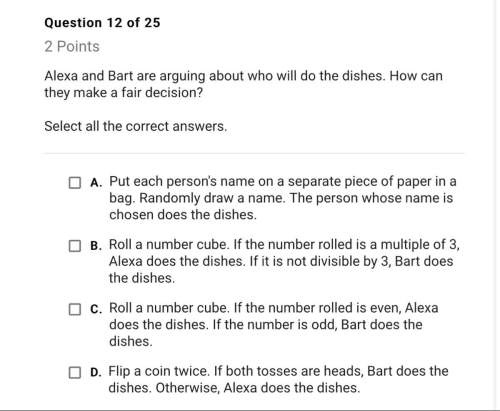
Mathematics, 29.05.2021 01:00 HyperZ
There are about 2,700 institutions of higher learning in the United States (inclduing junior colleges and community colleges). In 1976, as part of a continuing study of higher education, the Carnegie Commission took a simple random sample of 225 of these institutions. The average enrollment in the 225 sample schools was 3,700, with an SD of 6,000. A histogram for the enrollments was plotted and did not follow the normal curve. However, the average enrollment of all the 2,700 institutions was estimated to be 3,700, give or take 400 or so. Say whether each of the following statements is true or false, and explain why.
a. It is estimated that 95% of the institutions in the United States enroll between 3,700-800 and 3,700+800=4,500 students.
b. An approximate 95%-confidence interval for the average enrollment of all 2,700 institutions runs from 2,900 to 4,500.
c. If someone takes a simple random sample of 225 institutions of higher learning, and goes 2 SEs either way from the average enrollment of the 225 sample schools, there is about a 95% chance that this interval will cover the average enrollment of all 2,700 schools.
d. The normal curve can't be used to figure confidence intervals here at all, because the data don't follow the normal curve.

Answers: 1


Other questions on the subject: Mathematics

Mathematics, 21.06.2019 14:30, Ezasha
Will mark brainliest with 20 points! the table shows how far object 1 traveled as a function of time. *time (seconds) - 2 4 6 8 *distance traveled (feet) - 18 36 54 72 the equation shows how far object 2 traveled in feet as a function of time in minutes. *f(x) = 10x which object traveled at a faster speed? justify your response.
Answers: 1

Mathematics, 21.06.2019 16:50, catdog5225
The table represents a linear function. what is the slope of the function? –6 –4 4 6
Answers: 3

Mathematics, 21.06.2019 17:00, cat216
Omar is going on a road trip! the car rental company offers him two types of cars. each car has a fixed price, but he also needs to consider the cost of fuel. the first car costs $90 to rent, and because of its fuel consumption rate, there's an additional cost of s0.50 per kilometer driven.
Answers: 2

Mathematics, 21.06.2019 19:00, jthollis1348
Find the y-intercept and x-intercept for the equation 5x-3y=60 what is the y-intercept
Answers: 1
You know the right answer?
There are about 2,700 institutions of higher learning in the United States (inclduing junior college...
Questions in other subjects:


History, 23.09.2019 00:30

History, 23.09.2019 00:30

Biology, 23.09.2019 00:30


Chemistry, 23.09.2019 00:30


History, 23.09.2019 00:30






